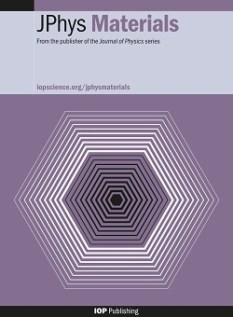A year after the first papers were published in a focus issue of JPhys Materials on the contributions of female scientists to 2D materials, Cinzia Casiraghi – one of the guest editors – talks to Matin Durrani about the success of the project to date

Female scientists make some amazing contributions to advanced materials, with almost a third of all researchers on the European Union’s €1bn Graphene Flagship project, for example, being women. But when it comes to, say, positions of leadership or invitations to speak at conferences, we’re far from reaching gender equality.
That’s one reason why JPhys Materials, which is published by IOP Publishing, the publishers of Physics World, decided to bring out a focus issue dedicated to female contributions to 2D materials. Guest edited by Cinzia Casiraghi from the University of Manchester, UK, Annick Loiseau from CNRS-ONERA, University Paris Saclay, France, and Cecilia Mattevi from Imperial College London, UK, it’s now been a year since the first papers in the issue appeared.
I caught up recently with Casiraghi to find out more about the issue and how it’s gone.
What was your motivation for the focus issue?
We wanted to celebrate the work of women investigators at different stages of their careers – not only to recognize their excellent science, but also to show the next generation of women scientists that there are lots of female role models out there. We wanted to fix the “leaky pipeline” by helping and supporting the progression of other women scientists. Long term, we are also planning a series of focus issues in all areas of advanced materials, which would provide a list of top women researchers who could be used for subject reviews, invited talks and so on.
 What’s been your impression of the overall quality of the papers published so far?
What’s been your impression of the overall quality of the papers published so far?
The issue currently has 13 research papers, one review article and one perspective, with a further three papers under peer-review. The quality has been very good, as shown by the incredible number of downloads – on average 850 each – in the first five months. The work on “Spectroscopic properties of few-layer tin chalcogenides”, led by Zeila Zanolli from the Catalan Institute of Nanoscience and Nanotechnology in Barcelona, has already been cited five times. Indeed, no matter what the gender of the author, quality has been always the number one criterion for whether a paper gets accepted in JPhys Materials.
By publishing this focus issue, did you come across talented women scientists whose work you personally hadn’t been aware of before?
Yes, and, unfortunately, I am sure there are many other talented women I am also not aware of. I have been very impressed by the collaborative and supportive network that this special issue has initiated. Women are often accused of not being able to build networks, but for this issue, that has certainly not been true.
What’s been the reaction from the authors and the wider community to this focus issue – did they find it a worthwhile exercise?
In general, both female and male scientists have enthusiastically supported this focus issue, often saying how very much needed it was. Remarkably, it wasn’t just the women we’d invited to write for the issue who suggested other female contributors; we also received names from male colleagues, showing they’re also sensitive to the subject too. Only in a very few cases were our invitations turned down because of the gender angle to this project. This feedback was very useful as it gave rise to interesting discussions with the scientists around gender issues and how to improve female representation in science.

Why carbon is an amazing material – part one
Have any of the women who contributed papers found it has helped their research careers, raised their profiles, or led to new opportunities?
I hope so. Zeila Zanolli, for example, became an associate professor after publishing her work, while Lucia Gemma Delogu from the University of Padua, Italy, on the back of her JPhys Materials paper, used this opportunity to write a review article on the results obtained from the two European projects she has co-ordinated, by providing visibility to her role in the projects.
Did you learn any lessons yourself from the focus issue?
Yes, several. First, although I have been involved in 2D materials ever since the discovery of graphene, it’s remarkable how fast the field’s been growing, and, as consequence, how many people, especially emerging scientists, are struggling to get visibility. Second, it has been interesting to see how female scientists from different geographical areas or at different stages of their careers reacted in different ways to the special issue. There are lots of data we could extract from this exercise that could be used to improve gender equality in this field.
You’ve published 15 papers so far – are there any more in the pipeline?
We expect a total of 16 papers.
What progress has been made on plans for further JPhys Materials focus issues covering the work women scientists in other areas of advanced materials?
The next focus issue – on “materials for energy” – is already open for submissions. But as it’s on a different topic, I personally am not involved in it, although I am delighted that JPhys Materials is following up on our exercise. It’s being guest-edited by Giulia Grancini (University of Pavia, Italy), Serena Corr (University of Sheffield, UK), Deli Wang (Huazhong University, China), Claudia Schnohr (University of Leipzig, Germany) and Mari-Ann Einarsrud (Norwegian University of Science and Technology). More than 40 confirmed submissions have already been received, which is amazing. I am looking forward to that focus issue being published and comparing the reactions between the two communities.



